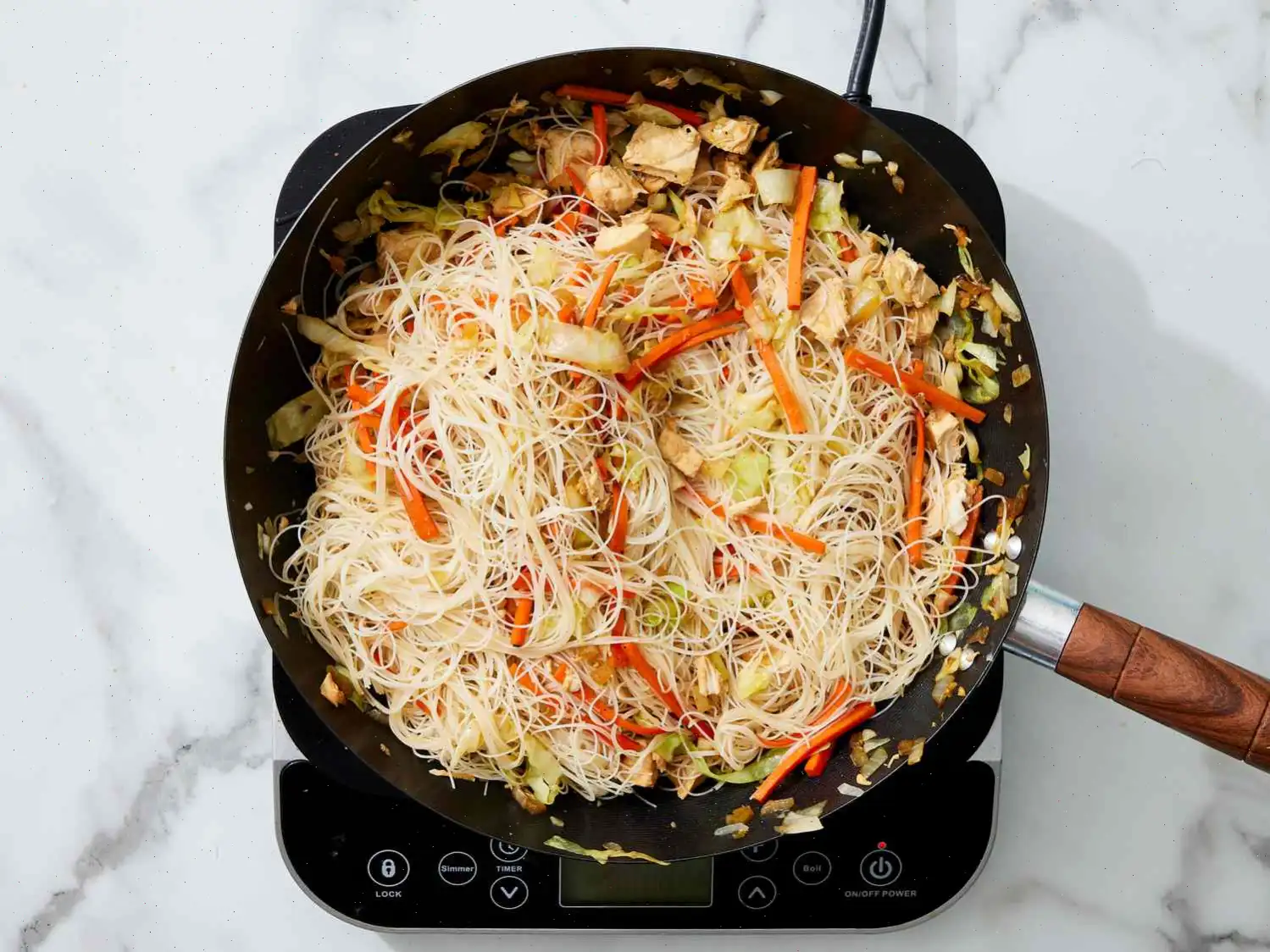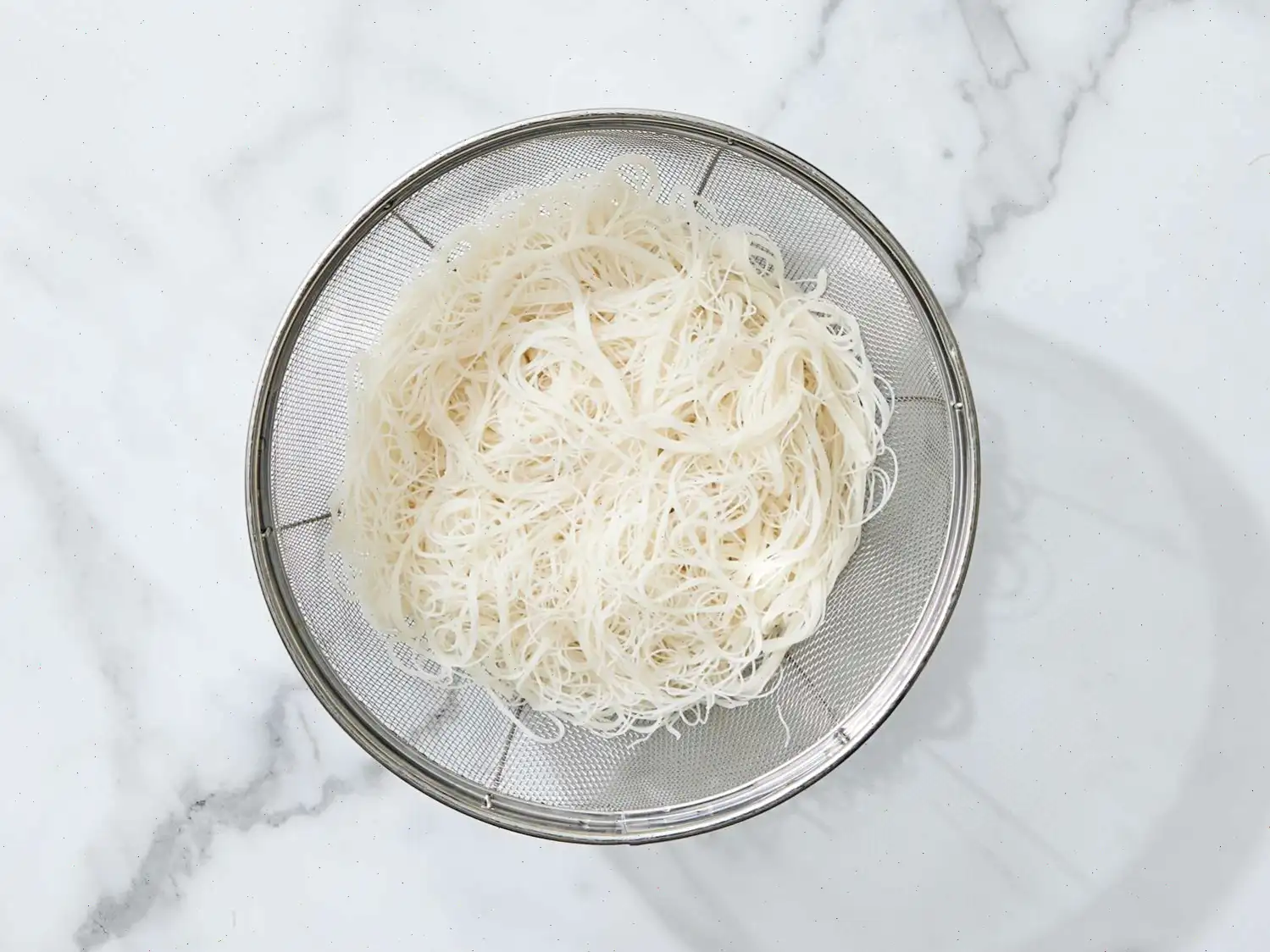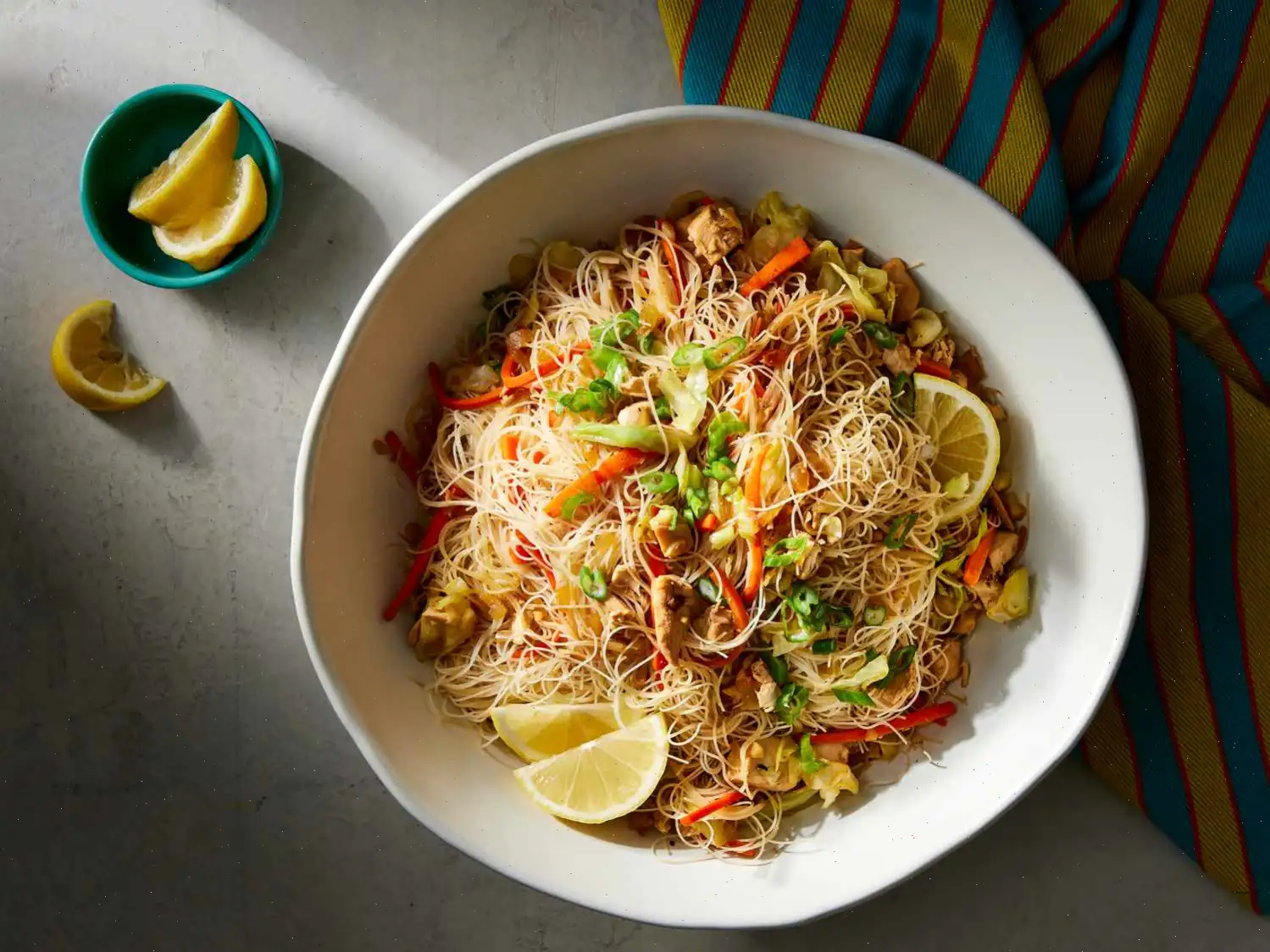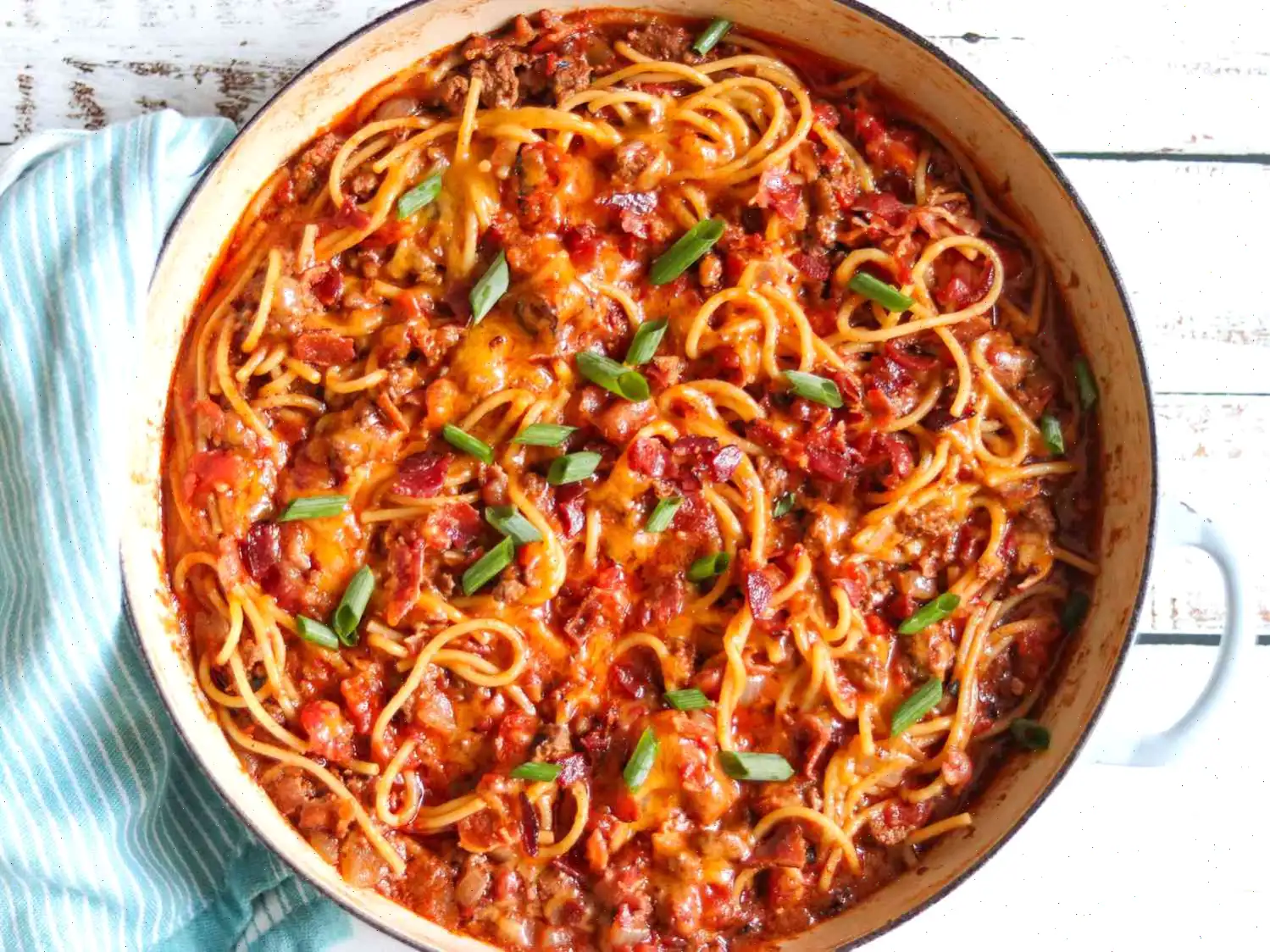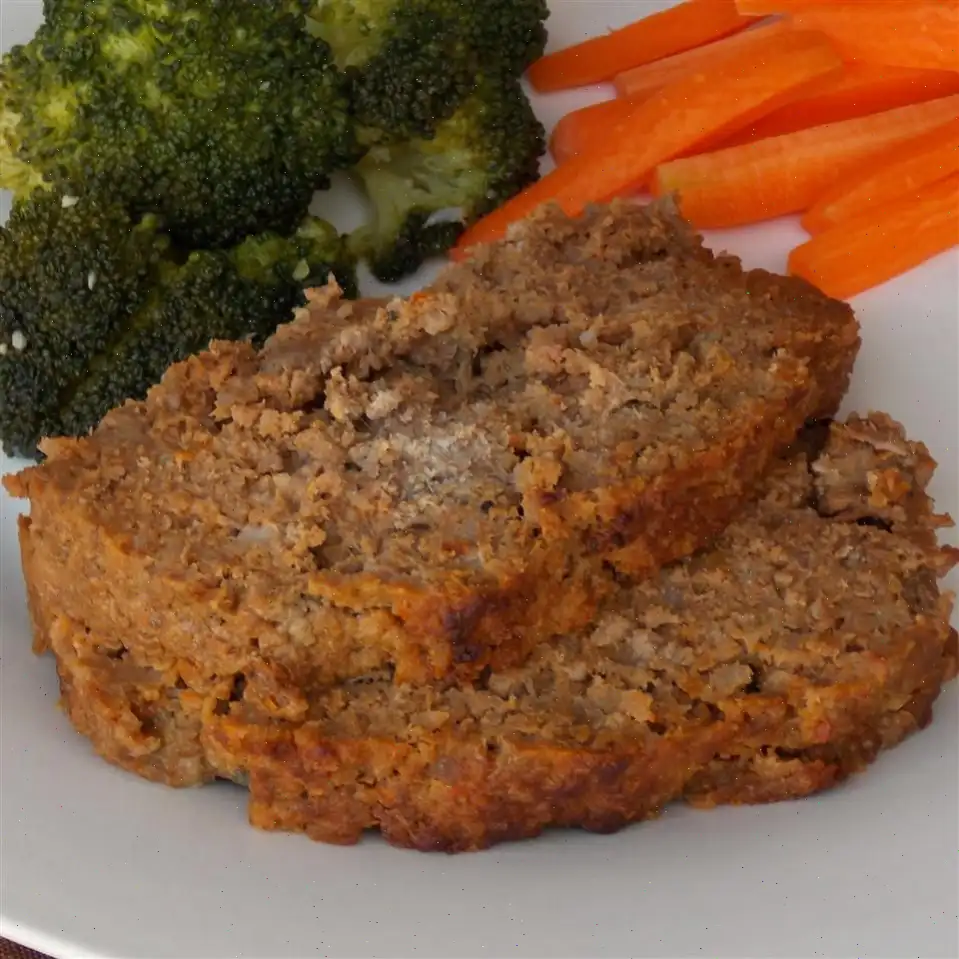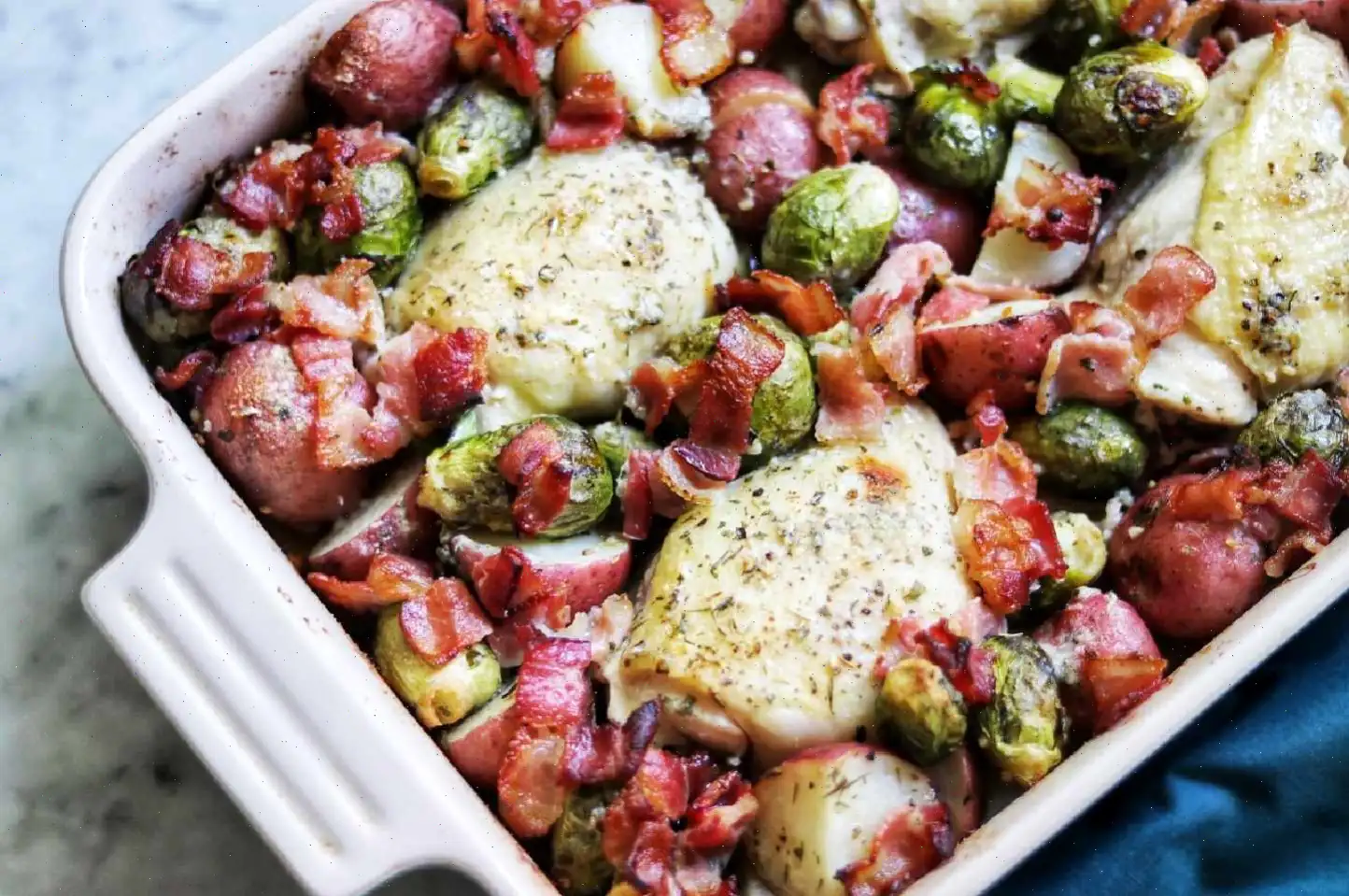
Quick and Easy Pancit Recipe
This pancit recipe is a flavor sensation and it comes together in just half an hour!
What Is Pancit? Pancit is a traditional Filipino dish that features rice noodles, vegetables, and often meat, like pork or chicken. There are many varieties, but all share this delicious foundation.
How to Make Pancit
Follow the step-by-step guide below to create a delightful pancit dish:
- Step 1: Start by softening the rice noodles. Place them in a large bowl, cover with warm water, and let them soften for 8-10 minutes. Once softened, drain and set aside.
- Step 2: While the noodles are softening, heat 1 teaspoon of vegetable oil in a large wok or skillet over medium-low heat. Add the finely diced onion and minced garlic, cooking for 3-5 minutes until the onion becomes tender and fragrant.
- Step 3: Stir in 2 cups of diced cooked chicken breast meat, along with the thinly sliced cabbage and carrots. Add cup of soy sauce, then cook everything together for another 3-5 minutes until the cabbage starts to soften.
- Step 4: Once the vegetables have softened, add the softened rice noodles to the skillet. Toss everything together and cook, stirring constantly, until the noodles are heated through.
- Step 5: Transfer the pancit to a serving dish and garnish with fresh lemon wedges. Serve immediately and enjoy!
Best Noodles for Pancit
Pancit is traditionally made with vermicelli rice noodles, which are easy to use since they dont require boiling. Simply soften them in warm water. If rice noodles arent available, you can substitute with udon or chow mein noodles.
How to Serve Pancit
Consider pairing pancit with other Filipino dishes like Filipino chicken or pork recipes. For serving ideas, explore more Filipino dishes to complement your meal.
How to Store Pancit
Store any leftover pancit in an airtight in the refrigerator for up to four days. For longer storage, freeze it for up to three months. Thaw it in the refrigerator overnight before reheating.
Ingredients:
- 1 (12 ounce) package dried rice noodles
- 1 teaspoon vegetable oil
- 1 onion, finely diced
- 3 cloves garlic, minced
- 2 cups diced cooked chicken breast meat
- 1 small head cabbage, thinly sliced
- 4 carrots, thinly sliced
- cup soy sauce
- 2 lemons, cut into wedges for garnish
Nutrition Facts (per serving):
- Calories: 369
- Total Fat: 5g (6% DV)
- Saturated Fat: 1g (7% DV)
- Cholesterol: 35mg (12% DV)
- Sodium: 789mg (34% DV)
- Total Carbohydrates: 65g (24% DV)
- Dietary Fiber: 7g (26% DV)
- Protein: 18g (36% DV)
- Vitamin C: 76mg (84% DV)
- Calcium: 110mg (8% DV)
- Iron: 2mg (12% DV)
- Potassium: 568mg (12% DV)
Tips and Praise:
- "Awesome starter recipe," says LittleMsBozzi. "I added in some fish sauce, Maggi seasoning, shrimp, and soft-boiled eggs, and it was incredible."
- "This is my second time making it and it's so good," raves SweetCatalyst. "The mix of soy sauce, garlic, onion, and lemon juice makes the dish. Just needed a sprinkle of salt to make the flavor pop."
- "I make this all the time now," says Sara Vogt. "Leftovers heat up great, and it's quick, easy, and cheap! Everyone I make this for asks for more!"
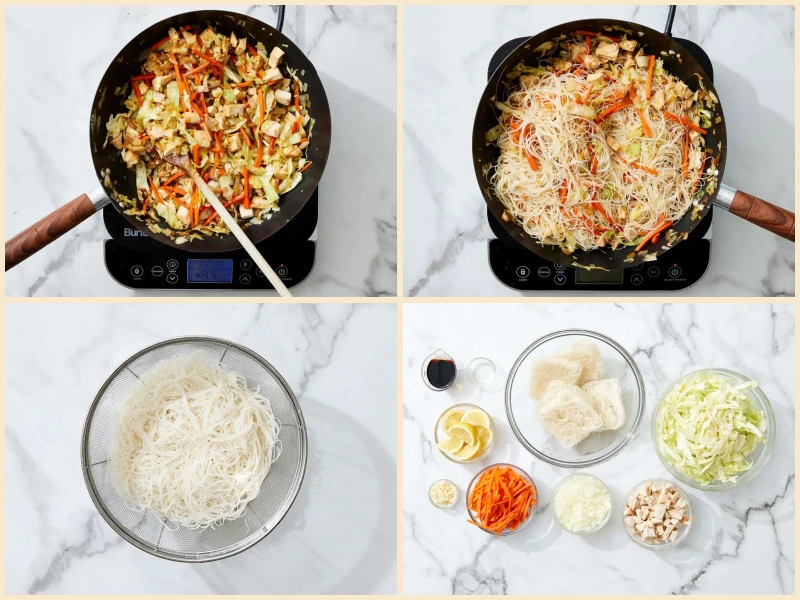

Quick and Easy Pancit is a popular Filipino stir-fried noodle dish made with rice noodles, vegetables, and meat, usually chicken. Its a go-to meal for Filipino households, easy to prepare, and perfect for family gatherings and celebrations. Below, we explore its rich history, regional variations, and fascinating facts.
Origin and History of Pancit
The word pancit comes from the Chinese word "pianzi," meaning "noodles." It was introduced to the Philippines by Chinese immigrants during the early colonial period. Over time, pancit became an integral part of Filipino cuisine, evolving to incorporate local ingredients and flavors. Its often believed that pancit symbolizes longevity and good fortune, which is why its traditionally served at birthdays and other celebrations in Filipino culture.
Regional Variations
Pancit comes in many different regional variations across the Philippines, each with unique ingredients and cooking methods. In the Ilocos region, for instance, youll find pancit palabok, which features rice noodles in a rich shrimp sauce, while in Cebu, pancit molo takes the form of a delicious soup with dumplings. Pancit bihon, made with thin rice noodles, is perhaps the most popular version, and the one featured in this recipe. Regardless of the variation, pancit is always a crowd-pleaser, and its versatility makes it adaptable to different tastes and dietary preferences.
How Pancit Differs from Similar Dishes
Pancit is often compared to other Asian noodle dishes such as Chinese chow mein or Thai pad Thai, but it has some distinct characteristics. Unlike chow mein, which is stir-fried with soy sauce and other seasonings, pancit typically features a more subtle, savory flavor with a balance of soy sauce and citrus, often from calamansi (Filipino lime). Additionally, the rice noodles used in pancit give it a unique texture that differs from the wheat noodles found in many other Asian dishes. While pad Thai includes peanuts and a sweeter sauce, pancit is less sweet, focusing on savory flavors and a variety of meats and vegetables.
Where Pancit Is Usually Served
Pancit is a dish commonly served during special occasions and family gatherings in the Philippines. Its a staple at birthday parties, New Years celebrations, and festive dinners, as it symbolizes good health and prosperity. It is also a dish enjoyed at casual family meals or potlucks. In the U.S. and other countries with large Filipino communities, pancit can be found at Filipino restaurants and is often paired with other traditional dishes such as lumpia (Filipino egg rolls) and lechon (roast pig). Some Filipino households even serve it as part of a kamayan feast, where food is spread out on banana leaves for everyone to share.
Interesting Facts About Pancit
- Many varieties: Pancit comes in more than 10 regional variations, including pancit canton (egg noodles), pancit Malabon (with seafood and a rich sauce), and pancit bihon (the rice noodle version used in this recipe).
- Longevity tradition: Pancit is often served during birthdays because the noodles represent long life. Eating it is believed to bring good luck and longevity to the person celebrating their birthday.
- Street food staple: In the Philippines, street vendors often serve pancit, making it an affordable and delicious snack for busy city-dwellers.
- Healthy twist: Pancit is versatile enough to be adapted into a healthy meal by using more vegetables and lean proteins, like chicken or shrimp, making it suitable for a variety of dietary preferences.
Conclusion
Whether youre celebrating a special occasion or simply craving something flavorful and satisfying, Pancit is the perfect dish to enjoy. With its rich history, regional variations, and versatility, its no wonder this dish remains a favorite in Filipino households and beyond. Try this Quick and Easy Pancit Recipe and experience a taste of the Philippines right in your own kitchen!
You can listen to this recipe in AI audio format. Simply click the play button below to listen to the content in a format that suits you best. It’s a great way to absorb information on the go!
FAQ about Quick and Easy Pancit Recipe
Comments
Jeanne Cupertino
10/06/2025 01:52:54 PM
Wonderful! Tasted just like my mom's pancit! I used rice noodles and soaking them for about ten minutes did the trick, but make sure to break the noodles before soaking them or you'll have some really long noodles. The noodles, when cooked, will come out with an al dente texture to them.. Even Mom's leftovers still had that a day or two later. It's just the nature of the beast. Just a couple of things: I switched in green onions for the diced onions for color, used leftover chicken (this is a great dish for any leftover meat, including beef and pork) and used garlic powder to control the garlicky flavor better. Perhaps most importantly, I used Kikkoman soy sauce to cook with. Growing up, Kikkoman was for cooking with, due to it's lighter flavor, and La Choy was for seasoning at the table. I still follow that rule, and it works very well for pancit. I would highly recommend adding as many veggies and meats as you would like, just increase the amount of sauce you need. The only warning I'll leave anyone with is that I found the meat too salty after having been sauteed with the veggies in the soy sauce and oil. Next time I prepare this, I will saute the veggies by their lonesome until just about done, then throw in the meat to warm, followed almost immediately by the noodles. Play with it, make it your own, and enjoy! This is an awesome, easily prepared party dish. You'll be amazed by how much is made with one package of noodles.
always_hungry
04/14/2008 08:04:06 PM
When you shop for the rice noodles, look for the package labeled "pancit bihon", or "bihon". Keep in mind that not all rice noodles are the same. Some rice noodles are for Vietnamese pho, while some are for pad thai. I am Filipina, and I like to garnish my pancit with thinly sliced green onions. They add color and additional flavor. Another traditional topping is sliced hard boiled eggs.
Mike
11/19/2023 09:51:02 PM
I spiced it up a bit, with some chopped birdseye peppers. A time saving hack was using packaged coleslaw (the kind in a bag without dressing) the carrots and cabbage are chopped perfectly.
Cindyray
01/29/2024 12:51:01 PM
This is very basic. I normally make this but use Aloha Shoyu soy sauce. You can usually find this at your local Asian Market. I add snap peas, and green onions. The noodles can be cut or left as is. I use sesame oil to sauté vegetables in, also add fish sauce. I top with fried garlic, and you can buy this at the Asian Market as well. You can use fresh green beans as well or add bamboo shoots or water chestnuts. I use the Napa Cabbage instead of regular green cabbage and matchstick sliced carrots. You can add whatever veggies you like. And I scramble 2 eggs into it like I would if making fried rice.
coffeytalk
09/22/2023 02:12:15 AM
Decent recipe for beginner pancit. Growing up we always made pancit when we made lumpia (Filipino egg rolls) and the juice from the draining veggie and pork stuffing from the lumpia was used to season the pancit. Save yourself some time and just go to any Asian market and get packets of pancit mix along with some actual pancit bihon rice noodles from the Philippines. And then enjoy!
NiftyPrawn1817
01/28/2024 04:04:21 PM
I made Pancit the first time 20yrs ago. This recipe is the basic..I soaked the rice Stix in the broth I boiled the chix in.. added slices of Chinese sausage, shrimp and a Tbsp of Hosin Sauce to bump up Flavor..
Debra Makowski
08/04/2023 11:39:08 PM
Added ginger, turmeric, extra garlic, sesame oil, Mongolian hot oil. My husband had three helpings!!
GoldenBacon1234
08/02/2023 05:22:17 AM
I used less soy sauce, and added a few drops of fish sauce and sesame oil. Made all the difference in the world. Also, shrimp instead of chicken.
Mauro Lasao
02/16/2024 05:55:42 PM
Instead of pre-soaking the rice noodles in water, traditionally, filipinos will use a cup of water or even better, chicken broth and pour it in the pan after stir frying the vegetables and chicken. Put in the rice noodles and stir/mix until the lquid is soaked up. Chicken broth is preferred since water has no taste.
FlimsyDate6165
08/16/2023 03:47:56 AM
We ate it. It was okay, but as other reviewers have said, it was very bland. I even doctored it up with toasted sesame oil, seasoned rice wine vinegar, some shallots, I softened the noodles in chicken boullion, added toasted sesame seeds at the end along with crushed dry roasted peanuts and servedd momofuko's crunchy garlic chili oil on the side. Still was very bland. Don't think I'll make this again and will look for a more authentic version.
Sam Ff
04/16/2020 11:24:56 PM
Delicious! Very large servings- halved everything except soy sauce and garlic and it was enough for around 5 people. Also cooked chicken in the same pan used to cook everything else (w/o washing in between) to add more chicken flavor. Don't forget to add some salt with each new addition to the pan and some pepper when finished and it's amazing!
Regina
09/07/2025 06:07:40 PM
Great
litg8r
06/01/2025 11:22:02 PM
Followed the recipe, but used bag cole slaw mix to save time. It worked great. When I make it again (and I will), I will use sesame oil instead of the vegetable oil. I will add about a half cup of chicken stock to make sure there's enough liquid to wilt the veggies. Finally, I think I'll add some coarsely chopped fresh mushrooms (even though it's a deviation from traditional pancit) to give the dish additional flavor and to create a sauce. Will make this again with just a few tweaks.
matt151617
04/13/2025 11:11:28 PM
As written, this recipe is a 2/5. There's absolutely no seasoning other than a ¼ cup of soy sauce. With improvements, it's a 4/5: heavily season the chicken, add red pepper flakes, add rice vinegar, add more lemon. It still needed something else and I'm not sure what else.
Anja Collette
03/16/2025 05:27:36 PM
I don't know why people are saying this had so much flavor. All it uses is soy sauce, and not very much for this amount of vegetables and noodles. I had to use almost a whole bottle of soy sauce (albeit, low sodium), plus quite a few other random sauces I had in my fridge, plus some vinegar, to give this any flavor.
Emma Turner
03/08/2025 03:37:20 PM
So much flavor for so little effort.
VividCocoa3529
02/28/2025 05:24:34 PM
Very easty and my husband and I loved it. It makes a LOT, but we enjoyed the leftovers to the last bite.
GlitzyBun3078
02/01/2025 07:25:02 PM
I added broccoli and switched the rice noodles with angel hair pasta. I also added yoshida for a little flavor. My whole family loved it, especially the grandkids. Will definitely make again.
VioletFish5658
01/26/2025 05:03:41 AM
So simple and full of flavor. Shrimp, chicken or pork can be add or meatless. They are are all good. Enjoy we did!
sharon
01/09/2025 03:08:46 AM
I loved pancit for years but moved away from my Filipino friends so I learned to make it. I substituted bok choy for cabbage and pork instead of chicken although I have also used chicken as well.



